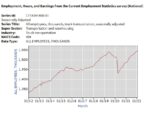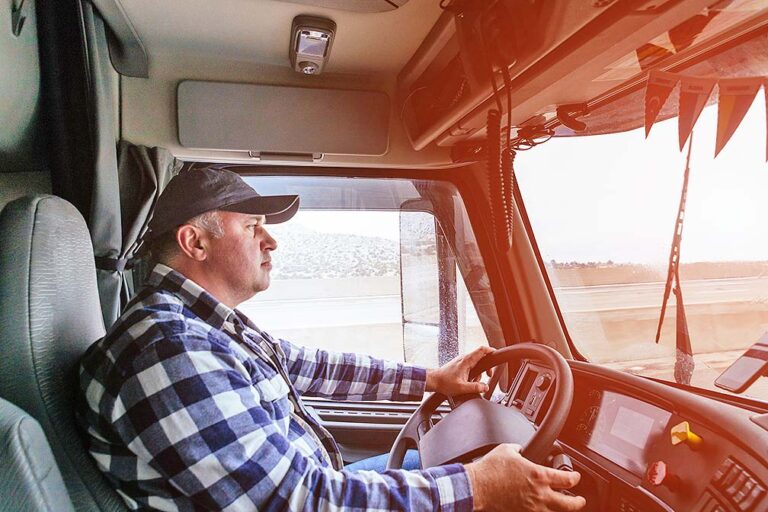WASHINGTON — U.S. employers added a robust 678,000 jobs in February, another gain that underscored the economy’s solid health as the omicron wave fades and more Americans venture out to spend at restaurants, shops and hotels despite surging inflation.
The Labor Department’s report Friday also showed that the unemployment rate dropped from 4% to a pandemic low of 3.8%, extending a sharp decline in joblessness as the economy has rebounded from the pandemic recession.
According to the U.S. Bureau of Labor Statistics (BLS), the average monthly gain for jobs in the trucking industry has been around 5,400 since the beginning of 2021. The February job total for the trucking industry equals 1,549,100.
Since April 2020, the truck transportation sector has added around 119,000 jobs, according to the BLS.

Friday’s hiring figures were collected before Russia’s invasion of Ukraine, which has sent oil prices jumping and has heightened risks and uncertainties for economies in Europe and the rest of the world.
Yet the February hiring data suggest that two years after COVID-19 sparked a nationwide shutdown and 22 million job losses, the disease is losing its grip on America’s economy. More people are taking jobs or searching for work — a trend that, if it endures, will help ease the labor shortages that have bedeviled employers for the past year.
In addition, fewer people are now working remotely because of the disease. A continuing flow of people back to offices could boost employment in urban downtowns. And the number of Americans who are delaying job hunts for fear of the disease fell sharply from January, when omicron was raging, to February.
“All signs are that the pandemic is easing its hold on jobs and the economy,” said Jane Oates, president of WorkingNation and a former Labor Department official. “Very strong numbers in very uncertain times.”
Recent economic data show that growth has stayed healthy as new COVID infections have plummeted since late January. Consumer spending has risen, spurred by higher wages and savings. Restaurant traffic has regained pre-pandemic levels, hotel reservations are up and far more Americans are flying than at the height of omicron.
Still, escalating costs for gasoline, wheat and metals such as aluminum, which are exported by both Ukraine and Russia, will likely accelerate inflation in the coming months. Higher prices and anxieties surrounding the war could slow hiring and growth later this year, though economists expect the consequences to be more severe in Europe than in the United States.
Inflation has already reached its highest level since 1982, squeezing America’s households and businesses, with price spikes especially high for such necessities as food, gasoline and rent. In response, the Federal Reserve is set to raise interest rates several times this year beginning later this month. Those increases will eventually mean higher borrowing rates for consumers and businesses, including for homes, autos and credit cards.
Chair Jerome Powell said this week he plans to propose that the Fed raise its benchmark short-term rate by a quarter-point when it meets in about two weeks. Powell has acknowledged that high inflation has proved more persistent and has spread more broadly than he and many economists had expected.
One figure in Friday’s report could provide reassurance for the Fed’s policymakers as they assess inflation pressures: Average hourly pay barely grew in February. Higher wages, while good for workers, often lead companies to raise prices to cover their higher labor costs and thereby further heighten inflation.
The strong hiring in February occurred across most of the economy, with restaurants, bars and hotels adding 79,000 jobs, construction 60,000 and transportation and warehousing 48,000. Though the economy still has 2.1 million fewer jobs than it did before the pandemic erupted two years ago this month, the gap is closely fast.
After months of concerns about labor shortages holding back businesses, more Americans started job searches in February for the second straight month. The proportion of Americans either working or looking for a job rose to 62.3%, up from 61.5% a year ago but remains below the pre-pandemic level of 63.4%.
The number of people who said they avoided job hunting because they were concerned about COVID fell to 1.2 million in February, down 600,000 from January, when omicron was raging.
Gregory Daco, chief economist at tax advisory firm EY-Parthenon, suggested that the increase in the number of Americans looking for a job last month was “the most important number” in the report.
“That will reduce wage growth pressures and put us on a more sustainable trajectory for the economy,” Daco said.
For now, the rapid fading of the omicron variant has given a boost to the economy. A survey by The Associated Press-NORC Center for Public Affairs Research found that Americans are now much less worried about COVID than they were in December and January. Mask mandates and other restrictions are ending.
Data from the restaurant reservation software provider OpenTable showed that seated diners surpassed pre-pandemic levels late last month. And figures from the Transportation Security Administration reflected a sharp increase in the number of people willing to take airplane flights.
During the omicron wave, businesses barely wavered in their demand for workers. Job openings at the end of December reached near-record levels, with an average of 1.7 available positions for every unemployed person. Historically, there are usually more people out of work than there are jobs.
The Trucker Staff contributed to this report.
The Associated Press is an independent global news organization dedicated to factual reporting. Founded in 1846, AP today remains the most trusted source of fast, accurate, unbiased news in all formats and the essential provider of the technology and services vital to the news business. The Trucker Media Group is subscriber of The Associated Press has been granted the license to use this content on TheTrucker.com and The Trucker newspaper in accordance with its Content License Agreement with The Associated Press.














